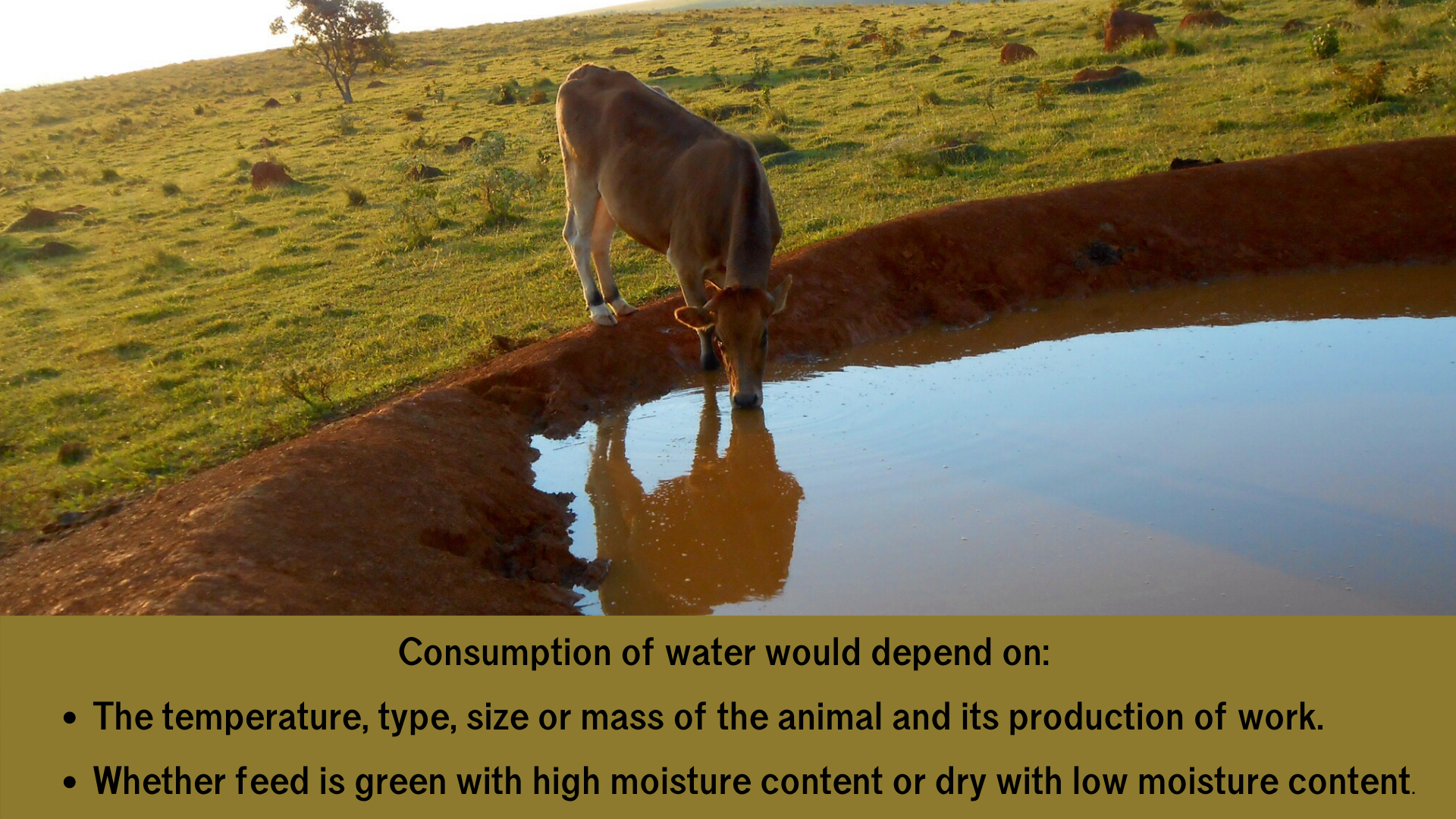So many factors influence water consumption by animals that accurate data for daily intake is not practical. Rough estimates are, however, necessary for the purpose of making provision for adequate supplies. Actual consumption of water would depend on the temperature, type, size or mass of the animal and its production of work and whether the feed is green with high moisture content or dry with low moisture content. Water deprivation to the degree of cellular dehydration would seriously affect mass gains and feed efficiency. Young calves that have suffered from an attack of diarrhoea are classical examples of dehydration. The other extreme would be an excess of water to the degree of cerebral oedema. Disturbances may also be seen, such as laminitis in horses. The daily consumption of large amounts of feed demands a relatively greater quantity of water to be consumed by the animal for optimum function of its digestive processes. This important physiological balance may be observed in cattle grazing on poor dry veld in winter, where daily water consumption appears to be surprisingly low.

The daily intake of water was always lower in winter or dry pasture than in summer on green pasture. See the table attached below.
- Environmental conditions in terms of temperature, humidity as well as feed succulence, can vary water consumption substantially.
- Lactating cows consume more water proportional to their production.
- Water conservation of mature sheep results in a reduction in requirements as compared to younger animals.
Click on the link/s below to open the resources.